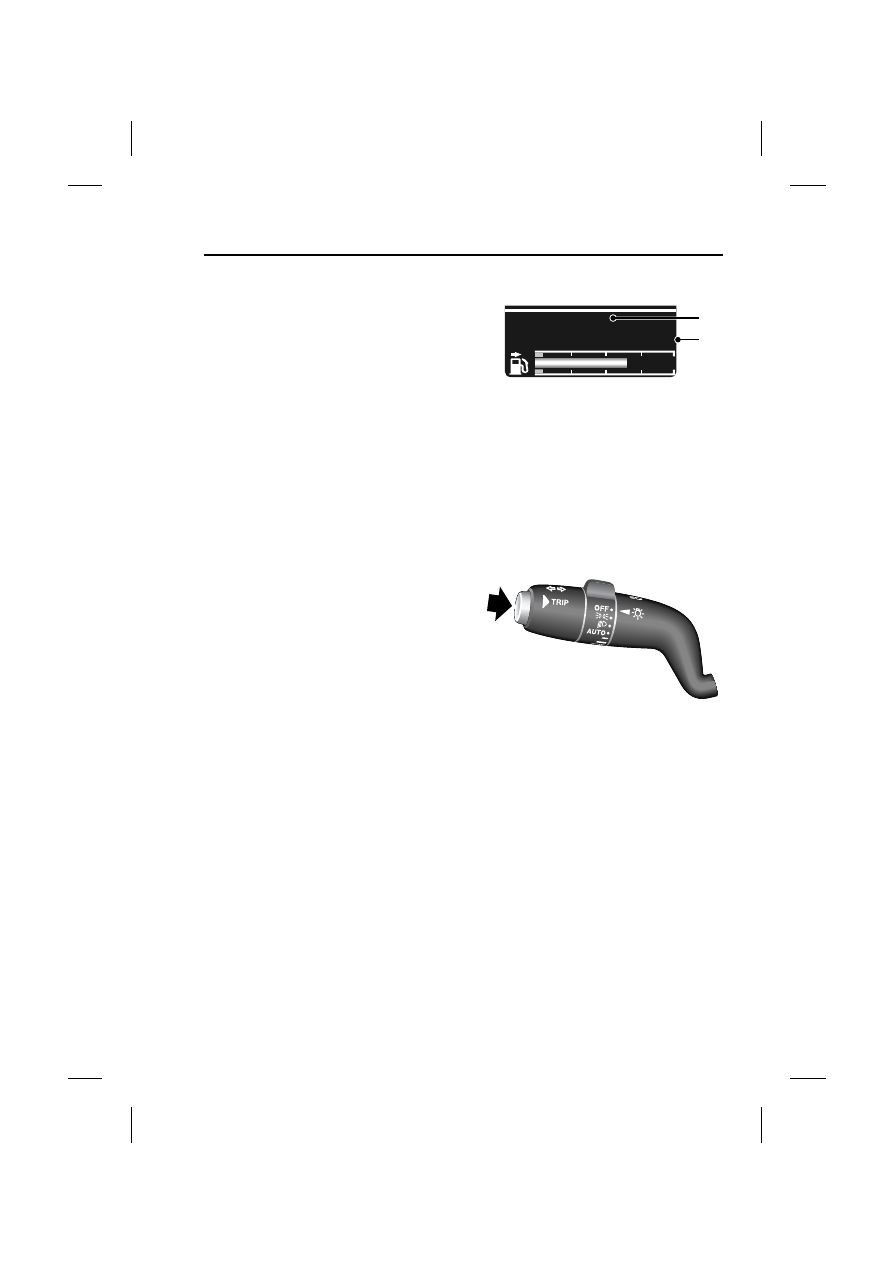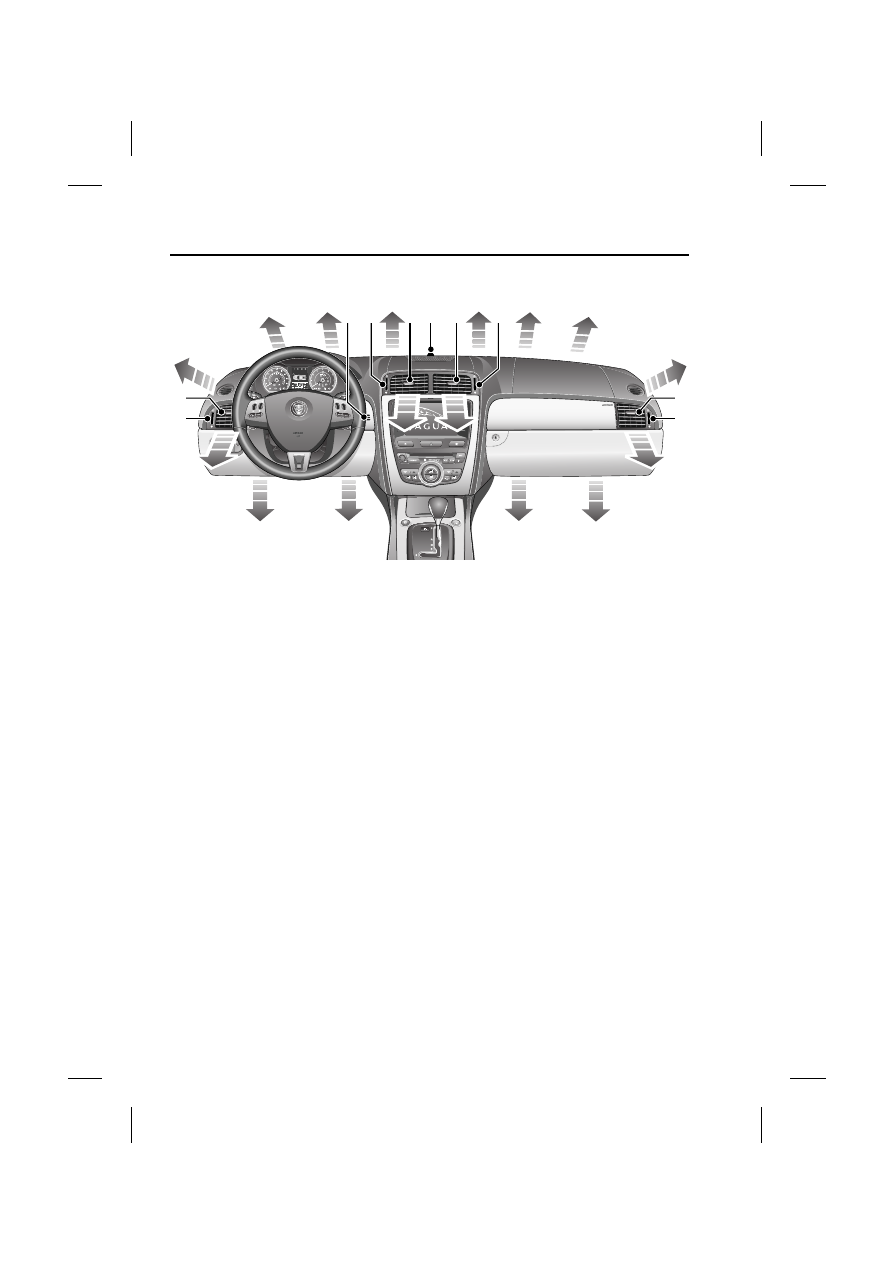Jaguar XK. Manual — part 32

131
Information displays
R
TRIP COMPUTER
The computer memory stores data for a
journey or series of journeys until it is
reset to zero.
The displayed information is for guidance
only, as it can be affected by traffic, road
and weather conditions.
Three independent memories are
available, A, B and Auto. A and B
memories can be set independently,
while the Auto trip will reset after every
ignition cycle as the vehicle moves.
Full trip computer information for the trip
memories can be displayed on the
vehicle touch-screen located in the
centre console, while current selected
trip computer information is displayed on
the instrument cluster message centre.
To access the trip computer
touch-screen settings:
• From the main Hometouch-screen
menu, select Vehicle.
• Select Trip computer.
• Select requirements from the menu.
For a system flow chart - See
PERSONALISED SETTINGS (page 122).
Trip computer message centre
display
Vehicle total distance travelled 1, trip
distance 2 are displayed as well as,
average fuel economy and average
speed if selected via the touch-screen.
Also A, B or Auto will be displayed,
depending on the current memory
selected.
Odometer
The odometer shows the total vehicle
distance travelled since the vehicle was
new.
The odometer and trip distance reading is
displayed in either miles or kilometres,
depending on the units selected via the
touch-screen. See TRIP COMPUTER
(page 131).
Changing the display
Press the TRIP button on the end of the
left column stalk switch repeatedly to
display the message centre data in the
following order:
• trip distance
• average speed
• average fuel consumption
• range.
Trip distance (A, B and Auto)
Distance travelled since the last memory
reset. The maximum trip reading is 16
090 kilometres (9 999.9 miles). The
computer will automatically reset to zero
if this distance is exceeded.
MILES
10849
A :
238.7
E93860
1
2
E91244

Information displays
132
L
Average fuel consumption (A, B
and Auto)
The average fuel consumption, litres per
100 kilometres, miles per litre or miles per
gallon, based on the accumulated
distance travelled and the accumulated
fuel used.
Range
This shows the predicted distance, miles
or kilometres, that the vehicle should
travel on the remaining fuel, assuming
average fuel economy and fuel
consumption stay constant.
Average speed (A, B and Auto)
The average speed since the last press of
the reset button.
ML-km (also Miles-litre)
The display of metric or imperial units is
selected via the touch-screen. See TRIP
COMPUTER (page 131).
Display language
The the display language is selected via
the touch-screen. See TRIP
COMPUTER (page 131).
Reset
Resetting of the trip memories is carried
out via the touch-screen. See TRIP
COMPUTER (page 131).
INFORMATION MESSAGES
Most messages, when displayed have an
associated warning indicator, red or
amber, which will come on to indicate the
message priority. Also from time to time
information messages will be displayed.
If more than one message is active, each
is displayed in turn for two seconds in
order of priority.
Messages take priority over the trip
computer data and will be displayed
when the ignition is in the convenience
mode.
Note: The message centre information
messages and their meanings are
detailed within the appropriate subject
sections.
WARNING
If a red warning indicator is
displayed, stop the vehicle as
soon as possible when it is safe to
do so. Do not ignore critical warning
messages. Failure to do so may result in
serious damage to the vehicle.

133
Climate control
R
Climate control
PRINCIPLE OF OPERATION
The climate control panel is located in the
centre console. There are two control
facilities:
• A dedicated control panel located
below the audio and CD panel for
operation of the basic features.
• A touch control and display unit for
additional functions and personal
settings.
The climate control system features
automatic temperature and air
distribution control, which is
programmed to maintain optimum levels
of comfort within the vehicle in all but the
most severe conditions.
While the controls can be adjusted
manually to satisfy individual
requirements, allowing the system to
function automatically (in AUTO mode) is
the simplest method of operation and is
preferable in most operating conditions.
Use of air conditioning
Note: To prevent humidity build up inside
the vehicle and possible screen misting,
avoid driving with the air conditioning
system off or in manual air recirculation
for prolonged periods.
Air conditioning is an integral part of the
Climate Control system, providing cooled
and dehumidified air for occupant
comfort. The dry airflow is also effective
in preventing misting of the windows.
While the air conditioner can be manually
switched off, it is recommended that it is
used in all climatic conditions throughout
the year, preferably in AUTO mode.
Close all windows and the convertible top
when the air conditioning is on to ensure
satisfactory operation.
• If the air conditioning system is not
used frequently, it should be run
briefly at least once each week, with a
cold setting. This will prevent the
seals from drying out with
subsequent refrigerant leaks.
• Surplus water produced by the
dehumidifying process is expelled
from the system via drain tubes
beneath the vehicle. This may result
in a small pool of water forming on the
road when the vehicle is stationary
and is not a cause for concern.
WARNING
Do not disconnect any pipes in
the air conditioning refrigeration
system. A refrigerant is used
which can cause blindness if allowed to
contact the eyes. If refrigerant should
contact the eyes or skin, wash the eyes
or affected area with cold water for
several minutes. Do not rub. As soon as
possible thereafter, obtain treatment
from a doctor or eye specialist.

Climate control
134
L
AIR VENTS
The air vents provide fresh or heated air
to the interior of the vehicle. Ensure that
the air intake grille at the base of the
windscreen is kept clear of any
obstruction.
Airflow and direction can be adjusted
with the thumbwheel controls 1 and
direction vanes 2.
AUTOMATIC CLIMATE
CONTROL
Automatic climate control provides
efficient regulation of the vehicle
environment without constant
adjustments from the occupant.
Sensors inside the vehicle monitor
temperature, humidity 3 and direct
sunlight 4. Do not obstruct these
openings. In response to sensor
indications, the electronic control system
automatically adjusts the heat input,
blower speed, air intake and airflow
distribution to maintain the selected
temperature(s) and reduce misting.
Automatic operation provides optimum
comfort under most driving conditions.
It is recommended that automatic
control, AUTO, is selected as the
normal operating mode.
Automatic control, AUTO, can be
overridden at any time.
4
1
2
1
2
2
2
1
3
1
E91342

Нет комментариевНе стесняйтесь поделиться с нами вашим ценным мнением.
Текст